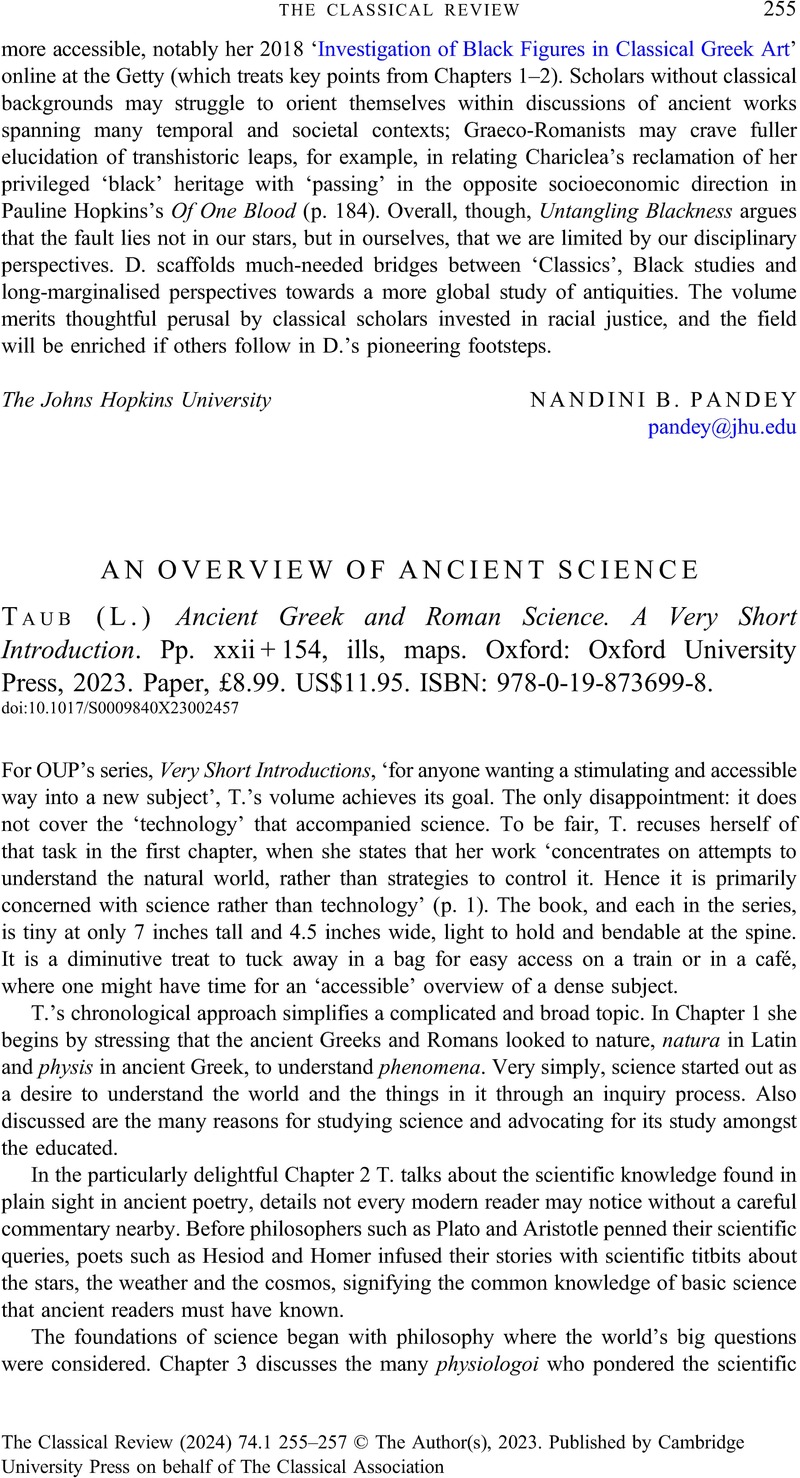No CrossRef data available.
Article contents
AN OVERVIEW OF ANCIENT SCIENCE - (L.) Taub Ancient Greek and Roman Science. A Very Short Introduction. Pp. xxii + 154, ills, maps. Oxford: Oxford University Press, 2023. Paper, £8.99. US$11.95. ISBN: 978-0-19-873699-8.
Review products
(L.) Taub Ancient Greek and Roman Science. A Very Short Introduction. Pp. xxii + 154, ills, maps. Oxford: Oxford University Press, 2023. Paper, £8.99. US$11.95. ISBN: 978-0-19-873699-8.
Published online by Cambridge University Press: 11 December 2023
Abstract
An abstract is not available for this content so a preview has been provided. Please use the Get access link above for information on how to access this content.

Information
- Type
- Reviews
- Information
- Copyright
- Copyright © The Author(s), 2023. Published by Cambridge University Press on behalf of The Classical Association


